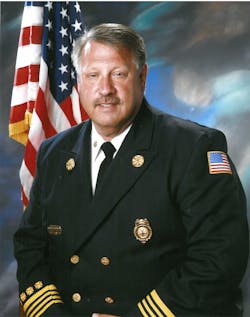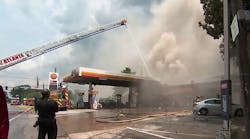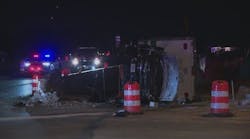I had a discussion recently with another fire chief concerning the merits of a trend that is becoming more prominent in the fire service—the quick response vehicle (QRV). We debated the pros and cons of putting firefighters in “some other type” of vehicle instead of a fire engine, ladder or ambulance and sending them as a first responder to an EMS call. On the surface, it looks like a smart idea.
Most fire service calls these days are EMS in nature. So someone figured out that it would be cheaper and save wear and tear on the fire trucks if we had firefighters respond to EMS calls in a pickup truck, panel truck or SUV. Many communities have followed the idea and put QRVs in fire stations to respond just to EMS calls. But I am not so convinced that this is the best approach.
The insurance analogy
The only way this makes sense to me is if you hire more firefighters and staff the QRV to respond just on medical calls. Unfortunately, many fire departments that have implemented QRVs do not follow this model. In most scenarios, you typically have a fire engine and QRV parked next to each other in the station. If a call is EMS, firefighters will jump in the QRV; if it is a fire, they jump on the engine.
Here’s an analogy: I have homeowner’s insurance. I want insurance coverage for 24/7—not just from 12 a.m. until 6 p.m. When you take firefighters off the engine and put them in a QRV, it’s like you’re saying you only want them for limited hours. Once those firefighters are removed from the fire apparatus, they are no longer a firefighting force and are mostly unable to provide any technical rescue. All they can do it perform EMS functions.
Firefighters are trained to be multi-functional. Taking them off their apparatus will handicap them without the tools they may need. What happens if they go on the EMS call and find out the caller was wrong and it really is a house fire? Maybe the person was suicidal and set the house on fire. What if, by chance, there is a house on fire two doors down from the location of the EMS call?
Further, when the firefighters are returning to the station, if a building fire comes out in their territory, they cannot respond. They can only be dispatched to another EMS call until they get back to the fire station. I saw this play out several times when I worked in Memphis. The first eight QRVs were placed at the busiest fire stations, and several fires were missed by an in-service company because they were returning to quarters in a QRV.
The financial side
Of course, costs will vary per mile depending on whether it is city, suburban or rural driving, as well as other factors, like pavement quality, depreciation, geographic location, etc. But according to AAA, the average cost per mile to operate a car is $0.608 cents, and an SUV is $0.926 (2015 stats). The average cost to operate a truck ranged from $1.15 per mile in the South to $1.89 per mile in the West, according to the National Trucker’s Association. So if you were to round off the difference between the most expensive place to operate a truck in the West and the average cost to operate an SUV, the savings is about $1 per mile. So if you travel a total of 5 miles round trip for each EMS call in an SUV, and you run six EMS calls a day, you just saved your community a total of $30 that day. Over the course of a year, the savings is $10,950.
If you buy the SUV, it costs your department anywhere from $30,000 to $40,000, and to put the extra medical equipment on, including the monitor/defibrillator at an average cost of $25,000, you’re looking at an approximate cost of $65,000 before you even turn the wheel. Divide the cost of implementing the SUV by the savings and, congratulations, you’ll break even in six years. But after six years, it’s almost time to replace the SUV because of the wear and tear. And let’s hope you didn’t miss any calls during those six years because you were in the wrong vehicle.
In sum
As the saying goes, look before you leap. Implementing QRVs in your community while you leave the fire engine parked may not make the difference you think.






